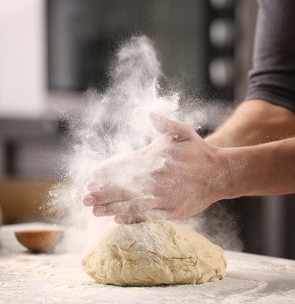

Published on Apr 10th, 2023

A gluten-free flour called organic rice flour is created by crushing whole brown rice kernels. Because of its many health advantages, it has become a well-liked substitute for conventional wheat flour among health-conscious consumers. This whole-grain flour made of endosperm and bran is gluten-free and high in fiber, vitamins, and minerals. The nutty flavor of our brown rice flour makes it ideal for use in bread and various pastries.
The high fiber and protein content of Glucorp's brown rice flour helps to maintain blood sugar levels, lower body weight, and promote a healthy lifestyle. Brown rice flour's inclusion of vitamin B, manganese, and plant components also aids in the prevention of celiac and cardiovascular illnesses.
We'll talk about the qualities of brown rice flour in this blog and why it makes a beautiful addition to your kitchen.

The tremendous nutritional value of brown rice flour is one of its most prominent features. Complex carbs, fiber, vitamins, and minerals are all abundant in brown rice.
All these nutrients are kept when brown rice is crushed into flour, making brown rice flour a healthy option for people trying to increase their nutrient consumption.
One cup of brown rice flour has about 7 grams of fiber, making it one of the highest sources of fiber. Its fiber content assists in maintaining stable blood sugar levels, lowering cholesterol levels, and regulating digestion.
Essential vitamins and minerals, including magnesium, phosphorus, and B vitamins, are significant in brown rice flour. These vitamins and minerals are crucial for maintaining overall health and well-being.
This is quite advantageous for people sensitive to gluten or who have celiac disease because it enables them to enjoy baked goods without suffering the side effects of consuming gluten.
Baking without gluten can be difficult because baked goods need gluten for their structure and suppleness. However, brown rice flour can be used instead of wheat flour in many recipes because it has a comparable flavor and texture.
A versatile item used in various dishes is brown rice flour. It can be used in baked items, including bread, muffins, and cakes, as a substitute for wheat flour. Waffles, crepes, and pancakes can all be made using it.

Brown rice flour can be used to produce gluten-free pasta and noodles and to thicken sauces and soups. Even fried meals can be coated to get a crispy feel without using wheat flour.

The mild hazelnut flavor of brown rice flour is another quality of the grains. This flavor profile makes a fantastic choice for recipes like bread or muffins that call for a delicate, nutty flavor.
Also, when utilized in these recipes, it only dramatically changes the taste of savory dishes like soups and stews.
Compared to ordinary wheat flour, brown rice flour has a longer shelf life, making it a fantastic pantry component. It can be kept in an airtight container in an excellent, dry location for up to six months.
It's vital to check the expiration date and utilize the brown rice flour before it goes wrong because it might get sour if not stored properly.
In summary, Brown rice Flour is more than just a product; it's a tradition that maximizes the flour culture's nutritional value and sweet flavor. Another benefit is that it enhances the texture of food, dehydrated food. Brown rice flour provides a flexible, wholesome, and gluten-free substitute for regular wheat flour. Because of its high fiber content, availability of vital vitamins and minerals, and mild, nutty flavor, it is a fantastic ingredient for various cuisines. Its extended shelf life, convenience, and health advantages make it a tremendous addition to any pantry and an excellent choice for anyone trying to enhance their general health and well-being.
BackBe the first to know about new products, events and offers.